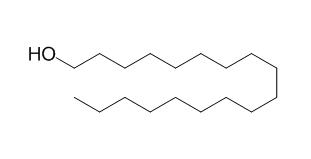1-Octacosanol
1-Octacosanol is reported to possess cholesterol-lowering effects, antiaggregatory properties, cytoprotective use, and ergogenic properties, it is used as a nutritional supplement.
Inquire / Order:
manager@chemfaces.com
Technical Inquiries:
service@chemfaces.com
Tel:
+86-27-84237783
Fax:
+86-27-84254680
Address:
1 Building, No. 83, CheCheng Rd., Wuhan Economic and Technological Development Zone, Wuhan, Hubei 430056, PRC
Providing storage is as stated on the product vial and the vial is kept tightly sealed, the product can be stored for up to
24 months(2-8C).
Wherever possible, you should prepare and use solutions on the same day. However, if you need to make up stock solutions in advance, we recommend that you store the solution as aliquots in tightly sealed vials at -20C. Generally, these will be useable for up to two weeks. Before use, and prior to opening the vial we recommend that you allow your product to equilibrate to room temperature for at least 1 hour.
Need more advice on solubility, usage and handling? Please email to: service@chemfaces.com
The packaging of the product may have turned upside down during transportation, resulting in the natural compounds adhering to the neck or cap of the vial. take the vial out of its packaging and gently shake to let the compounds fall to the bottom of the vial. for liquid products, centrifuge at 200-500 RPM to gather the liquid at the bottom of the vial. try to avoid loss or contamination during handling.
Biomedicines.2024, 12(12):2928.
BMC Complement Med Ther. 2020, 20(1):91.
Microbiol. Biotechnol. Lett.2022, 50(2): 193-201.
GxABT2022, 2268.2:15515.
J Biol Chem.2021, 297(6):101362.
Biochem Biophys Res Commun.2019, 518(4):732-738
Chin Med.2022, 17(1):66.
Pharm Biol.2021, 59(1):134-145.
Biomed Pharmacother.2022, 145:112410.
Molecules.2018, 23(12):E3103
Related and Featured Products
Oxid Med Cell Longev. 2016;2016:1404505.
Antioxidant, Antibacterial, and Cytotoxic Activities of the Ethanolic Origanum vulgare Extract and Its Major Constituents.[Pubmed:
27051475]
Oregano is a perennial shrub that grows in the mountains of the Mediterranean and Euro/Irano-Siberian regions.
METHODS AND RESULTS:
This study was conducted to identify the major constituents of the ethanolic Origanum vulgare extract and examine the cytotoxic, antioxidant, and antibacterial properties of the extract but more importantly the contribution of its specific major constituent(s) or their combination to the overall extract biological activity. Gas chromatography/mass spectroscopy analysis showed that the extract contained monoterpene hydrocarbons and phenolic compounds, the major ones being carvacrol and thymol and to a lesser extent p-cymene, 1-Octacosanol, creosol, and phytol. A549 epithelial cells challenged with the extract showed a concentration-dependent increase in cytotoxicity. A combination of thymol and carvacrol at equimolar concentrations to those present in the extract was less cytotoxic. The A549 cells pretreated with nonlethal extract concentrations protected against hydrogen-peroxide-induced cytotoxicity, an antioxidant effect more effective than the combination of equimolar concentrations of thymol/carvacrol. Inclusion of p-cymene and/or 1-Octacosanol did not alter the synergistic antioxidant effects of the carvacrol/thymol mixture. The extract also exhibited antimicrobial properties against Gram-positive and Gram-negative bacterial strains including clinical isolates.
CONCLUSIONS:
In conclusion, the oregano extract has cytotoxic, antioxidant, and antibacterial activities mostly attributed to carvacrol and thymol.
Asian Pac J Trop Med. 2017 Jun;10(6):549-556.
Xanthine oxidase inhibitors from Archidendron clypearia (Jack.) I.C. Nielsen: Results from systematic screening of Vietnamese medicinal plants.[Pubmed:
28756918 ]
To screen Vietnamese medicinal plants for xanthine oxidase (XO) inhibitory activity and to isolate XO inhibitor(s) from the most active plant.
METHODS AND RESULTS:
The plants materials were extracted by methanol. The active plant materials were fractionated using different organic solvents, including n-hexane, ethyl acetate, and n-butanol. Bioassay-guided fractionation and column chromatography were used to isolate compounds. The compounds structures were elucidated by analysis of spectroscopic data, including IR, MS, and NMR.
Three hundreds and eleven methanol extracts (CME) belonging to 301 Vietnamese herbs were screened for XO inhibitory activity. Among these plants, 57 extracts displayed XO inhibitory activity at 100 μg/mL with inhibition rates of over 50%. The extracts of Archidendron clypearia (A. clypearia), Smilax poilanei, Linociera ramiflora and Passiflora foetida exhibited the greatest potency with IC50 values below 30 μg/mL. Chemical study performed on the extract of A. clypearia resulted in the isolation of six compounds, including 1-Octacosanol, docosenoic acid, daucosterol, methyl gallate, quercitrin and (-)-7-O-galloyltricetiflavan. The compound (-)-7-O-galloyltricetiflavan showed the most potent XO inhibitory activity with an IC50 value of 25.5 μmol/L.
CONCLUSIONS:
From this investigation, four Vietnamese medicinal plants were identified to have XO inhibitory effects with IC50 values of the methanol extracts below 30 μg/mL. Compound (-)-7-O- galloyltricetiflavan was identified as an XO inhibitor from A. clypearia with IC50 value of 25.5 μmol/L.



